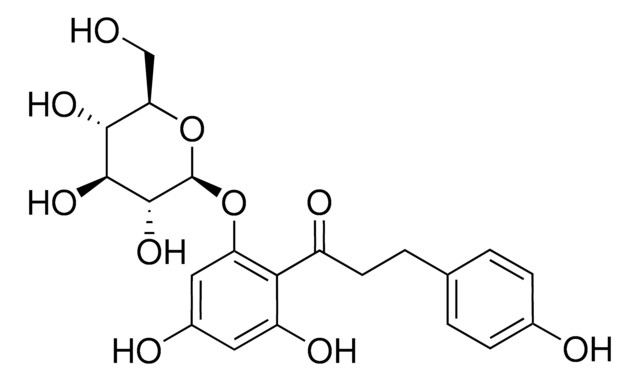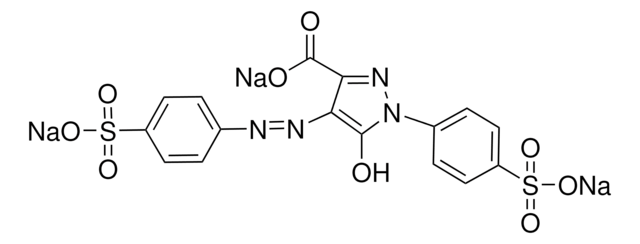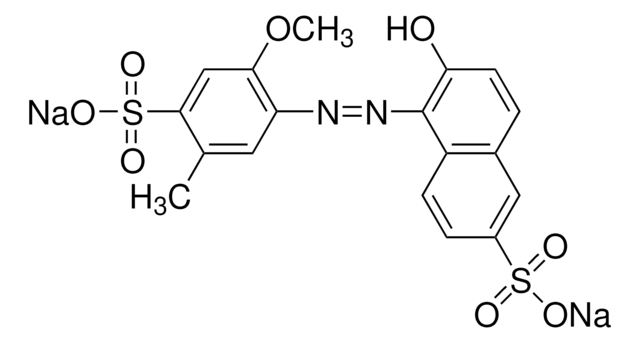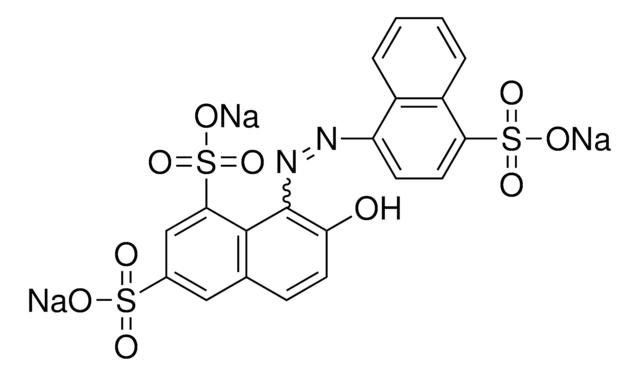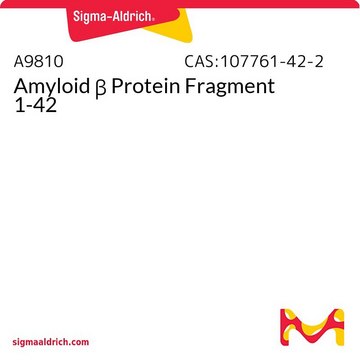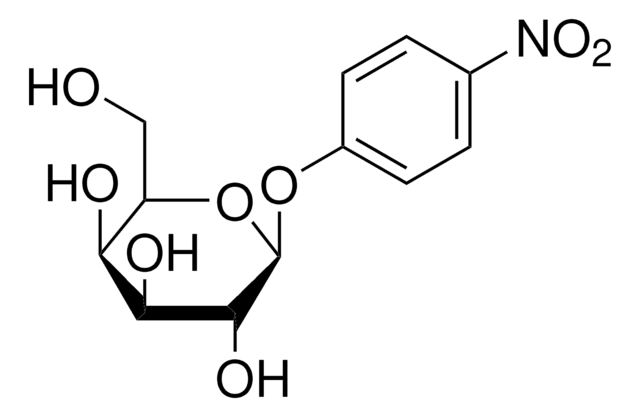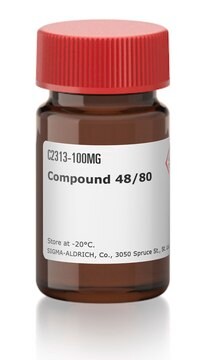Alle Fotos(3)
Wichtige Dokumente
M6546
(±)-2-(p-Methoxyphenoxy)propionic acid
solid, ≥98%
Synonym(e):
PMP
Anmeldenzur Ansicht organisationsspezifischer und vertraglich vereinbarter Preise
Alle Fotos(3)
About This Item
Empirische Formel (Hill-System):
C10H12O4
CAS-Nummer:
Molekulargewicht:
196.20
MDL-Nummer:
UNSPSC-Code:
12352202
PubChem Substanz-ID:
NACRES:
NA.77
Empfohlene Produkte
Produktbezeichnung
(±)-2-(p-Methoxyphenoxy)propionic acid, ≥98%
Biologische Quelle
synthetic (organic)
Qualitätsniveau
Assay
≥98%
Form
solid
SMILES String
COc1ccc(OC(C)C(O)=O)cc1
InChI
1S/C10H12O4/c1-7(10(11)12)14-9-5-3-8(13-2)4-6-9/h3-7H,1-2H3,(H,11,12)
InChIKey
MIEKOFWWHVOKQX-UHFFFAOYSA-N
Anwendung
(±)-2-(p-Methoxyphenoxy)propionic acid may be used as a sweet taste receptor antagonist to study its effect on allulose-induced glucagon-like peptide 1 (GLP-1) secretion rats. It may also be used to study the response of the secretin tumor cell line (STC-1) to sweetener in the presence and absence of (±)-2-(p-methoxyphenoxy)propionic acid or lactisole.
Biochem./physiol. Wirkung
As a taste modulator, the sodium salt inhibits the perception of sweetness in humans, but not in rats.
Signalwort
Warning
H-Sätze
Gefahreneinstufungen
Eye Irrit. 2 - Skin Irrit. 2 - STOT SE 3
Zielorgane
Respiratory system
Lagerklassenschlüssel
11 - Combustible Solids
WGK
WGK 3
Flammpunkt (°F)
Not applicable
Flammpunkt (°C)
Not applicable
Persönliche Schutzausrüstung
dust mask type N95 (US), Eyeshields, Gloves
Hier finden Sie alle aktuellen Versionen:
Besitzen Sie dieses Produkt bereits?
In der Dokumentenbibliothek finden Sie die Dokumentation zu den Produkten, die Sie kürzlich erworben haben.
David E Lanfear et al.
JACC. Heart failure, 5(11), 823-832 (2017-11-04)
This study sought to derive and validate plasma metabolite associations with survival in heart failure (HF) patients. Profiling of plasma metabolites to predict the course of HF appears promising, but validation and incremental value of these profiles are less established. Patients
Miguel Concha et al.
Journal of biomedical materials research. Part B, Applied biomaterials, 106(6), 2464-2471 (2018-02-10)
In this study, highly neutralized, highly porous, and ultralight polymeric aerogels prepared from aqueous colloidal suspensions of chitosan (CS) and chondroitin sulfate (ChS) nanocomplexes, formulated as quasi-equimolar amounts of both, are described. These aerogels were designed as healing agents under
Kelly S Barth et al.
The Journal of continuing education in the health professions, 37(2), 98-105 (2017-06-01)
South Carolina (SC) ranks 10th in opioid prescriptions per capita-33% higher than the national average. SC is also home to a large military and veteran population, and prescription opioid use for chronic pain is alarmingly common among veterans, especially those
A Sclafani et al.
Physiology & behavior, 61(1), 25-29 (1997-01-01)
Cypha, propionic acid, 2-(4-methoxyphenol) salt, is a commercially available sweet taste inhibitor used in food products. The present study examined whether or not Cypha blocked the sweet taste response of rats. This was accomplished by measuring the consummatory response of
Yoko Murphy et al.
Pain physician, 18(4), E605-E614 (2015-07-29)
Canada has featured the second-highest levels of prescription opioid (PO) use globally behind the United States, and reported extensive PO-related harms (e.g., non-medical PO use [NMPOU], PO-related morbidity and mortality). A recent comprehensive review synthesized key data on PO use
Unser Team von Wissenschaftlern verfügt über Erfahrung in allen Forschungsbereichen einschließlich Life Science, Materialwissenschaften, chemischer Synthese, Chromatographie, Analytik und vielen mehr..
Setzen Sie sich mit dem technischen Dienst in Verbindung.